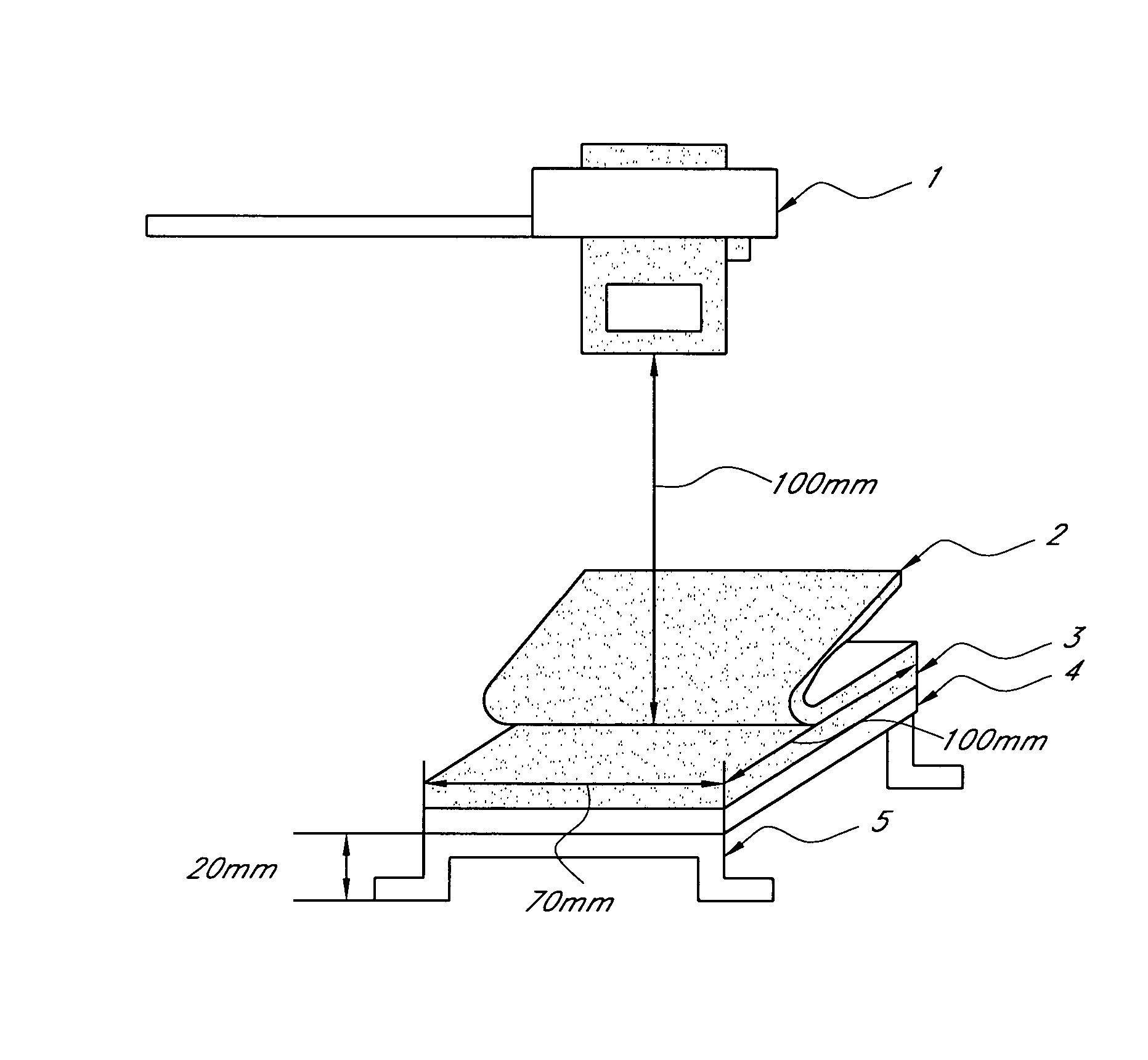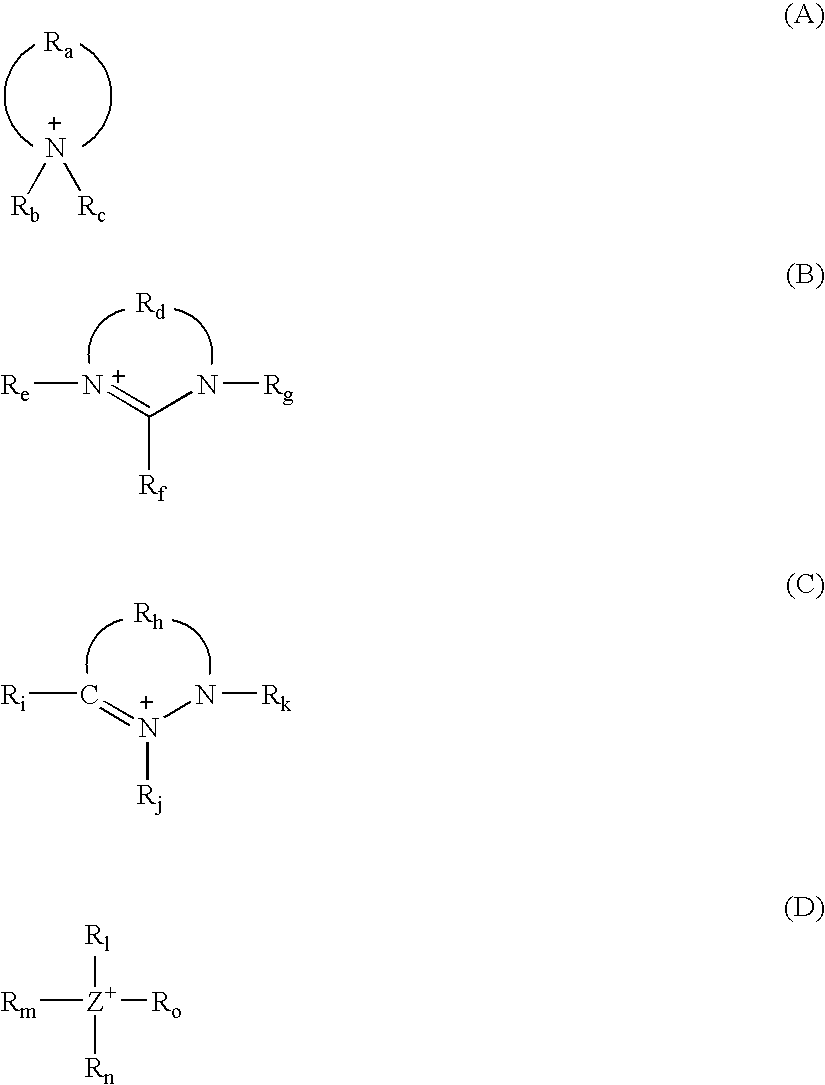Pressure-sensitive adhesive composition, pressure-sensitive adhesive sheets, and surface protecting film
a technology of pressure-sensitive adhesives and compositions, applied in film/foil adhesives, instruments, synthetic resin layered products, etc., can solve the problems of affecting the adhesion of adhesives, etc., to achieve excellent adhesion reliance, excellent antistatic properties, and reduce stainability
- Summary
- Abstract
- Description
- Claims
- Application Information
AI Technical Summary
Benefits of technology
Problems solved by technology
Method used
Image
Examples
examples
[0258] Examples which specifically show a construction and effect of the present invention will be explained below. Assessment items in Examples were measured as follows:
[0259] An acid value was measured using an automatically titrating apparatus (COM-550 manufactured by HIRANUMA SANGYO Co., Ltd.), and was obtained by the following equation.
A={(Y−X)×f×5.611} / M
[0260] A; Acid value
[0261] Y; Titration amount of sample solution (ml)
[0262] X; Titration amount of solution of only 50 g of mixed solvent (ml)
[0263] f; Factor of titration solution
[0264] M; Weight of polymer sample (g)
[0265] Measurement conditions are as follows:
[0266] Sample solution: About 0.5 g of a polymer sample was dissolved in 50 g of a mixed solvent (toluene / 2-propano1 / distilled water=50 / 49.5 / 0.5, weight ratio) to obtain a sample solution.
[0267] Titration solution: 0.1N 2-propanolic potassium hydroxide solution (for petroleum product neutralization value test manufactured by Wako Pure Chemical Industries, Ltd...
example i
[0295] A glass transition temperature Tg(° C.) was obtained by the following equation using the following reference values as a glass transition temperature Tgn(° C.) of a homopolymer of each monomer.
[0296] Equation:
1 / (Tg+273)=Σ[Wn / (Tgn+273)]
[0297] [wherein Tg (° C.) represents a glass transition temperature of a copolymer, Wn (-) represents a weight fraction of each monomer, Tg, (° C.) represents a glass transition temperature of a homopolymer of each polymer, and n represents a kind of each monomer]
[0298] Reference values:
[0299] 2-Ethylhexyl acrylate: −70° C.
[0300] Ethoxy-diethylene glycol acrylate: −70° C.
[0301] 2-Hydroxyethyl acrylate: −15° C.
[0302] A glass transition temperature Tg(° C.) of Acryl-based polymer (F) and (G) was obtained by the following procedures using the measurement of a dynamic visco elasticity.
[0303] Sheets of an acryl-based polymer having a thickness of 25 μm were laminated into a thickness of about 2 mm, this was punched into φ7.9 mm to prepare a cy...
example i-1
(Preparation of Pressure-Sensitive Adhesive Composition)
[0327] A solution (40% by weight) of the aforementioned acryl based polymer (A) was distilled to 20% by weight with ethyl acetate, and to 100 parts by weight of this solution were added 0.2 part by weight of 1-hexyl-3-methyl imidazolium trifluoromethane sulfonate (manufactured by ACROS Organics Corporation, liquid at 25° C.), 0.6 part by weight of an isocyanurate of hexamethylene diisocyanate (manufactured by Nippon Polyurethane Industry Co., Ltd, Coronate HX), and 0.4 part by weight of tin dibutyl dilaurate (1% by weight of ethyl acetate solution), which is a crosslinking catalyst, which was mixed and stirred for approximately 1 minute at room temperature (25° C.), and whereby, an acryl pressure-sensitive adhesive solution (1) was prepared.
(Preparation of Pressure-Sensitive Adhesive Sheet)
[0328] The aforementioned acryl pressure-sensitive adhesive solution (1) was coated on a side opposite to an antistatic-treated side of...
PUM
| Property | Measurement | Unit |
|---|---|---|
| Temperature | aaaaa | aaaaa |
| Percent by mass | aaaaa | aaaaa |
| Percent by mass | aaaaa | aaaaa |
Abstract
Description
Claims
Application Information
 Login to View More
Login to View More - R&D
- Intellectual Property
- Life Sciences
- Materials
- Tech Scout
- Unparalleled Data Quality
- Higher Quality Content
- 60% Fewer Hallucinations
Browse by: Latest US Patents, China's latest patents, Technical Efficacy Thesaurus, Application Domain, Technology Topic, Popular Technical Reports.
© 2025 PatSnap. All rights reserved.Legal|Privacy policy|Modern Slavery Act Transparency Statement|Sitemap|About US| Contact US: help@patsnap.com



